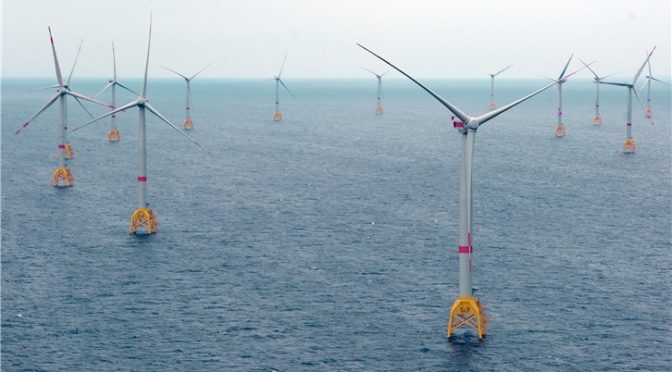The North Sea Wind Power Hub, an artificial island in the North Sea that could supply renewable energy to 80 million people in Europe is set to open in 2027. The hub will send electricity via long-distance cables to six European countries.
|
|
According to the plans, a 2.3 square mile (6 square kilometers) island will be created at the northeast end of the Dogger Bank, a relatively shallow area in the North Sea with high wind readings. Thousands of wind turbines will be placed around the island, with short alternating-current links to the island.
The island will be part of the North Sea Wind Power Hub project and will include an airport, harbor and converters to change wind-generated electricity from alternating current to direct current which would be transmitted over cables to the Netherlands, the United Kingdom, Belgium, Norway, Germany and Denmark.
The project’s backer is Dutch power grid operator TenneT. The company recently released a report claiming the island will be billions of euros cheaper than conventional windfarms and international power cables. Right now, costs estimates are projected to be over £1.3 billion ($1.75 billion).
Rob van der Hage, who manages TenneT’s offshore wind grid development programme, told the Guardian: ‘It’s crucial for industry to continue with the cost reduction path. The big challenge we are facing towards 2030 and 2050 is onshore wind is hampered by local opposition and nearshore is nearly full. It’s logical we are looking at areas further offshore.”
When asked about the engineering challenges behind building an island, Van der Hage said: “Is it difficult? In the Netherlands, when we see a piece of water we want to build islands or land. We’ve been doing that for centuries. That is not the biggest challenge.”
The North Sea Wind Power Hub Consortium
In June 2016, nine countries, including the Netherlands, Germany, Belgium, Luxemburg, France, Denmark, Ireland, Norway, and Sweden signed an agreement to build offshore wind parks with the primary purpose of reducing costs and making renewable energy more economically viable.
At the North Seas Energy Forum in Brussels on March 23, 2017, TenneT Netherlands, TenneT Germany, and the Danish Energinet.dk signed a trilateral agreement to cooperate in the further development of the project, hoping that Norway, the United Kingdom, and Belgium would join them.
Then, in September 2017, Dutch gas-grid operator Gasunie joined the consortium suggesting the plan add provisions to convert wind power to gas and use near offshore gas infrastructure for storage and transport, paving the way for a hydrogen economy.
The volumes of offshore wind energy required for the energy transition are so large that gas-based transmission and storage solutions shall be deployed in addition to electrical connections. The costs of energy transmission and long-term storage in gas form are considerably lower per unit of energy than if the energy is transmitted and stored in the form of electricity.
Biggest obstacle may be an economic one
While TenneT will probably shoulder the $1.3 billion cost of building the hub at the heart of the project, they are not allowed to build any of the power generation capacity. That will be left to offshore windfarm developers such as Denmark’s Ørsted and Germany’s Innogy.
However, to really get the project off the ground, it would be necessary to get other energy network operators, like the UK’s National Grid, to help pay for the long-distance power cable. The next step in the project is coming this year in the shape of a roadmap published in the Netherlands. If all goes well, Van der Hage said the earliest the island could be operational is 2027, with the windfarms to follow.
It is an ambitious project, yet it is feasible. TenneT thinks the project could handle windfarms with a capacity of 30GW, more than twice today’s total installed offshore wind power across the whole of Europe. And something this size would be very enticing to investors.





